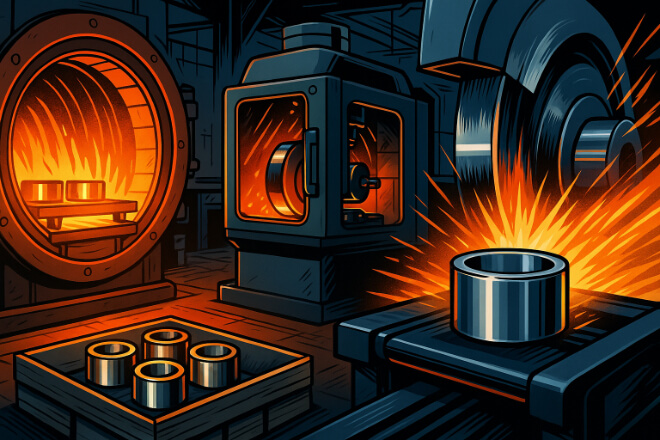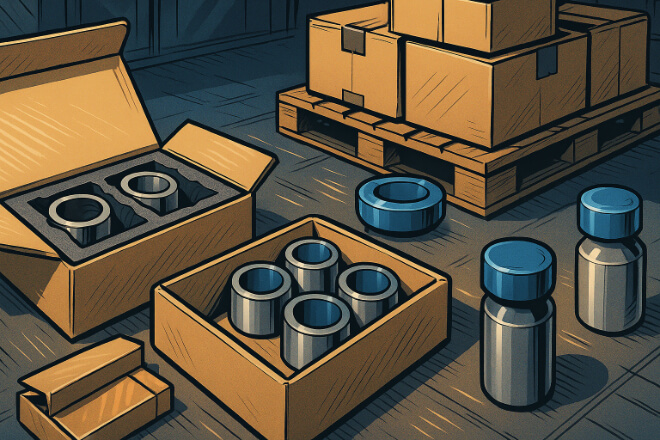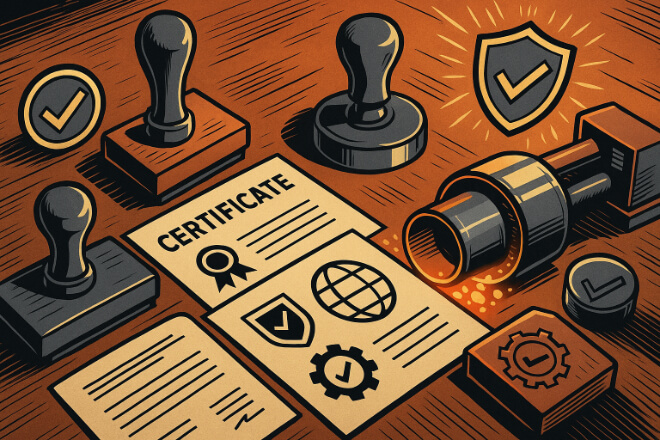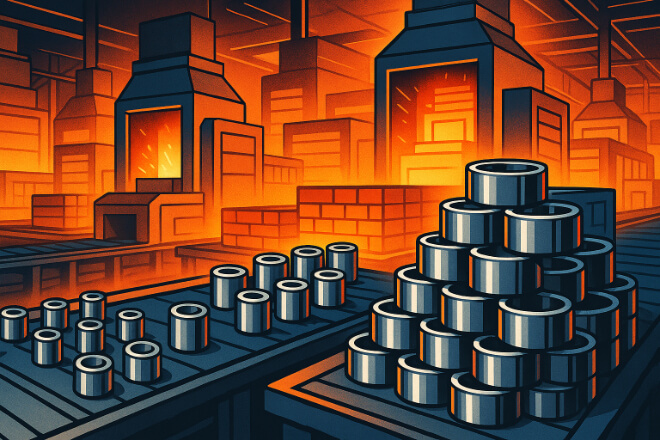Exporting بطانات كربيد التنغستن in 2025 involves more than material and machining cost.
For OEMs and global buyers, the final export price depends on many hidden factors—logistics, regulations, currency, packaging, and regional supply changes.
This article explains the key cost drivers in simple, clear language to help decision-makers understand how export prices are built and how to better plan sourcing strategies.
Raw Material Cost and Market Fluctuations

Raw material cost is the largest part of tungsten carbide bushing pricing. Tungsten ore and carbide powder shift in price based on global supply, mining output, and political conditions.
1). Key points that influence raw material cost
Tungsten ore supply: If mining output drops, powder price increases.
China’s market impact: China controls a major share of tungsten resources. Any policy changes affect global price.
Binder metals: Cobalt and nickel are also volatile. Higher binder cost increases the final bushing price.
Powder grade: Micrograin and submicron powders cost more due to strict processing requirements.
2). Typical Material Cost Comparison
| نوع المادة | Cost Impact | Reason |
|---|---|---|
| Standard WC-Co | واسطة | Stable supply but binder price changes |
| Submicron WC | عالي | Strict particle control increases cost |
| WC-Ni | عالي | Nickel price volatility |
Manufacturing Technology and Production Cost

Tungsten carbide bushings require advanced equipment and strict processes. High-precision production often creates higher export cost.
1). Main production cost drivers
Sintering furnace technology — Vacuum sintering or HIP adds stability but also raises cost.
Machining difficulty — Grinding carbide requires diamond wheels, skilled operators, and long cycle time.
Surface finish requirements — Ra ≤ 0.2 µm increases polishing and quality control cost.
Tight tolerances — ±0.005 mm or better requires slow machining and frequent inspection.
2). Why production cost matters for exports
Export customers often demand higher stability, better roundness, and stricter QC reports.
These additional requirements increase labor, inspection, and defect-control cost, raising export prices.
Packaging Requirements and Protection Level

Tungsten carbide is extremely hard but also brittle. Without proper packaging, chipping and micro-cracks may occur during shipping.
1). Packaging factors that increase export cost
Custom foam inserts for each bushing
Shock-resistant outer cartons
Moisture-proof sealed bags
Individual plastic or rubber protection caps
Export-grade pallets for container loading
2). Why packaging matters
If packaging is weak, transport damage becomes a major cost risk. Suppliers exporting to Europe, North America, and the Middle East typically use stronger packaging standards, increasing total export cost.
International Shipping and Logistics Cost

Global logistics have become more unstable in recent years. Fuel cost, container availability, and shipping route changes all impact export prices.
1). Main logistics cost factors
Sea freight rates (often fluctuate month-to-month)
Air freight for urgent orders (very expensive for heavy items like carbide)
Port handling fees
Insurance cost
Last-mile delivery fees
2). Logistics Mode Comparison
| Method | Cost Level | Best Use Case |
|---|---|---|
| Sea Freight | منخفض إلى متوسط | Bulk or regular shipments |
| Air Freight | عالي | Urgent orders |
| Express Courier | عالية جدًا | Small sample shipments |
Export Regulations, Documentation, and Compliance Costs

Different countries have different import policies. To export to Europe, the U.S., or Middle East, suppliers must prepare documents and may need compliance certificates.
1). Typical export documentation that increases cost
Commercial invoice
Packing list
Certificate of origin
HS code declaration
Quality inspection report
Material test certificate (MTC)
SDS (safety data sheet)
Compliance documents (RoHS, REACH, etc.)
2). Regulation-based cost increases
Additional inspection services
Certification fees
Compliance audits
Legalization or embassy stamping
These steps are required to ensure smooth customs clearance and reduce shipment delays.
Minimum Order Quantity (MOQ) and Production Scheduling

MOQ directly influences export cost because tungsten carbide production is batch-based.
1). Why MOQ affects export cost
Small quantities still require full furnace use
Tooling and setup cost are fixed regardless of batch size
Packaging and export papers cost the same for small or large orders
Small urgent orders disrupt production flow
2). General MOQ Impact Table
| MOQ Size | Cost Per Unit | Reason |
|---|---|---|
| Small (10–50 pcs) | عالي | Setup and tooling cost spread on small batch |
| Medium (100–300 pcs) | واسطة | Better production efficiency |
| Large (500+ pcs) | قليل | Full furnace loading, higher output efficiency |
Currency Exchange and Payment Terms

Exporters often quote in USD or EUR. Exchange rate changes can impact the final price.
Key payment-term factors
TT in advance may offer discounts
Net 30 / Net 60 increases supplier’s financial risk
LC (Letter of Credit) adds bank handling fees
Currency fluctuations affect profit margins
Strong currency instability often pushes suppliers to include buffer costs in quotations.
خاتمة
The export cost of tungsten carbide bushings depends on many connected factors—raw materials, production complexity, packaging, logistics, compliance, MOQ, and currency.
Understanding these cost drivers helps OEMs plan better, negotiate smarter, and reduce unexpected cost increases when sourcing globally.
إذا كنت تريد معرفة المزيد من التفاصيل حول أي شركة، فلا تتردد في اتصل بنا.
